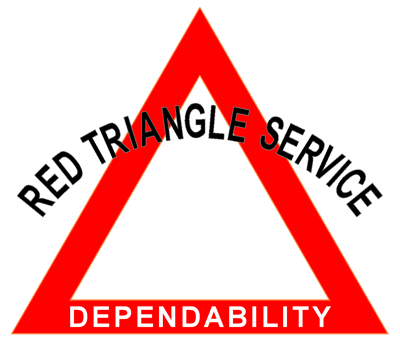 Allied Cement Manufacturers Ltd. Red Triangle Brand.
Allied Cement Manufacturers Ltd. Red Triangle Brand.
The Red Triangle Group was the informal but universal name of the Allied Cement Manufacturers Ltd., that operated the following plants:
| British Standard |
| Dunstable |
| Ellesmere Port |
| Harbury |
| Holborough |
| Rhee Valley |
| Sittingbourne |
Henry Spence Horne (b Marylebone 1891, d Wandsworth 3/7/1958) was a company promoter who was already twice bankrupt, the second time being his 1924 attempt to gain control of Blue Circle. The resulting coup d'état in the Blue Circle boardroom triggered a dramatic improvement in the company's efficiency.
Horne returned in 1926 in a second attempt to shake up the British cement industry. He set up three separate finance companies with inter-meshed affairs: British Cement Products and Finance Co. Ltd., Associated Anglo-Atlantic Corporation Ltd., and the Carmelite Trust. The latter two also had interests in other industries, including paper and publishing, but the three companies were referred to in the press as the "Horne Group", and were evidently operated in a concerted manner by Horne himself. Firstly, the Ship Canal Portland Cement Manufacturers Ltd (Ellesmere Port) was acquired. As a precursor to takeover, the Dunstable Portland Cement Co. (Dunstable) took over Smeed, Dean & Co Ltd (Sittingbourne) in December 1926. In April, 1927, Greaves, Bull and Lakin (Harbury) was bought by the Ship Canal company, and at the end of 1927 the enlarged Dunstable Portland Cement Co. and the Holborough Cement Co. (Holborough) were acquired. In 1928, British Standard Portland Cement Ltd. (British Standard) and Wiggins & Co. (Rhee Valley) were acquired. Unsuccessful attempts were made to purchase Cliffe. In August 1928 the cement companies were formally merged into the Allied Cement Manufacturers Ltd. This used a Red Triangle as its sales logo, and came to be referred to colloquially as the "Red Triangle Group".
The acquisition policy was to buy "up-to-date" independent plants, which could be made more profitable by centralized management and sales organisation. However, there was little expertise to make informed technical assessments of prospective purchases, and in fact all the plants acquired were at best second-rate. This combination had about one-third the capacity of the Blue Circle Group and was easily the second biggest player at the time. A price war commenced in early 1928, and continued until November that year. The price war was instigated by Red Triangle, and ended with its capitulation. Horne went bankrupt for a third time in 1929 due to massive falls in the share prices of the holding companies, and the group imploded following his departure. Although the usual assemblage of spivs and Drones' Club types was involved, the group was essentially a one-man-band, and Horne's reliance on financial savvy to the exclusion of any technical expertise inevitably proved fatal. The receiver was called in 13/1/1931 and in April, most of the group was bought by Blue Circle. The Rhee Valley plant was already shut. Blue Circle shut the Ellesmere Port and British Standard plants immediately, while Harbury, Sittingbourne, Dunstable and Holborough were all substantially re-engineered and continued in operation until 1970, 1970, 1971 and 1984 respectively.
Source: Cook, pp 67, 74-79, 82-90